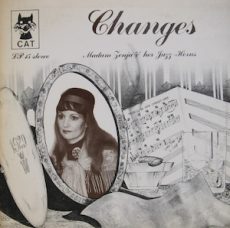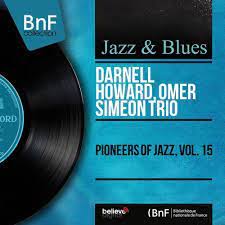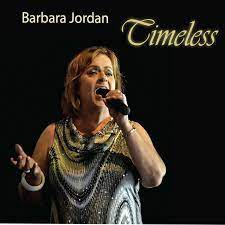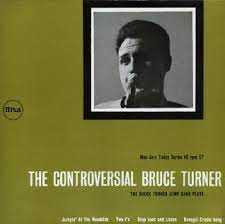
Daily Dose Of Jazz…
Wik Horn was born on August 9, 1943 in Amsterdam, Netherlands. Classically trained piano education for 4 years starting at 10, when he was 14 he started to play classic jazz with his younger brother trumpeter Fred.
After playing in several school bands he formed his first real band in 1965,The Court Town Rhythm Kings. The band played authentic old jazz in the way of Oliver, Morton, early Armstrong, Williams, Beiderbecke and Half Way House.
The band broke up in 1972 due to moving members and Wik moved from The Hague to resettle in Amsterdam. There along with his brother they founded in 1973 as Madam Zenja and Her Jazz Horns in 1973, together with singer Zenja Damm, recording two albums, Changes and Was It A Dream. From 1974 to 1980 he was president of the oldest and famous Jazzclub in Holland, the Haarlemse Jazz Club. Many of the great American musicians who came to Europe and Amsterdam performed there.
Settling in the little village of Leiderdorp between Amsterdam and The Hague, he spent some time in advertising and public relations. He started the jazz club De Wagenschuur from 1984 to 1994 and a new band, Swingin’ Crash, that started as a little swing ensemble but grew within a year into a small big band.
He went on to write charts and arrangements for the band and well as compose, song texts and write a little booklet for special occasions like the 60th anniversary of the The Hague Jazz Club. Pianist Wik Horn retired but has continued to have a life filled with music, writing and painting.
More Posts: arranger,bandleader,composer,history,instrumental,jazz,music,piano

Daily Dose Of Jazz…
Darnell Howard was born on July 25, 1895 in Chicago, Illinois and began playing violin at age seven, picking up clarinet and saxophone later in his youth. He began playing professionally with John H. Wickcliffe’s Ginger Orchestra from 1913 to 1916.
Moving to New York City in 1917, Darnell played and recorded as a violinist with W. C. Handy, then headed back to Chicago, where he led his own band, played with Charlie Elgar before joining James P. Johnson’s Plantation Days Band, which toured London, England in 1923. The following year he toured Europe again as a member of the Singing Syncopators that also played in Shanghai later in the decade.
His Chicago years saw him playing with Carroll Dickerson, King Oliver, and Erskine Tate, Jerome Carrington, Dave Peyton and Earl Hines. He led a quartet in 1928, but his jazz violin is featured on the Hines band’s February, 1933 recording of the Earl Hines/Jimmy Mundy swing composition Cavernism.
In the late 1930s, Howard was freelancing into the Forties and playing with Fletcher Henderson and Coleman Hawkins, and putting together another band in Chicago from 1943 to 1945. He would go on to play with Kid Ory in California for part of 1945, then returned to Chicago and back again in 1948 with Muggsy Spanier until 1953. His only recordings as a leader were done while he worked with Bob Scobey in 1950, amounting to only four sides.
Through the 1950s he played with Jimmy Archey, rejoined Earl Hines to play Dixieland in San Francisco, California and recorded with Don Ewell on his 1956–1957 albums. Sometime after 1962 Darnell suffered a prolonged illness and after recuperating he played with Elmer Snowden, Burt Bales, and his own groups. His final tour in 1966, was in Europe as a member of the New Orleans All-Stars, then he fell ill again. Clarinetist, violinist and alto saxophonist Darnell Howard transitioned on September 2, 1966 in San Francisco.
More Posts: bandleader,clarinet,history,instrumental,jazz,music,saxophone,violin

Daily Dose Of Jazz…
Örjan Kjellin was born on July 21, 1944 in Ljungby, Sweden and didn’t pick up the clarinet until the age of 15 and two years later formed his first band in partnership with pianist Lars Edegran. The band played music in the New Orleans style. He made his first records in his native Sweden at the age of 17.
Moving to New Orleans, Louisiana in 1966 he became a regular performer at several leading jazz venues including Preservation Hall. In 1968 he was a founder member of the New Orleans Ragtime Orchestra. He also led his own bands in the city including, in 1970, a band which held a residency at the Maison Bourbon Club. Two years later he formed the New Orleans Joymakers.
He recorded with several veteran New Orleans musicians including Josiah ‘Cié’ Frazier, Preston Jackson, Jim Robinson, Jabbo Smith, Zutty Singleton and Kid Thomas Valentine. In 1978, Örjan played with NORO for the soundtrack of the movie Pretty Baby. The following year he appeared in New York City as musical director, co-arranger and on-stage clarinetist with the stage musical One Mo’ Time.
In the early 80s he appeared with the same show during its long and successful run in London’s West End. Kellin has toured extensively with his own bands and with bands formed largely from New Orleans veterans. In 1992 he made his first solo tour of the UK.
Clarinetist Örjan Kjellin, a gifted and highly musical player who is known to the jazz world as Orange Kellin, continues to fan the flames of the music of New Orleans.
More Posts: arranger,bandleader,clarinet,history,instrumental,jazz,music

Daily Dose Of Jazz…
Barbara Jordan was born on July 13, 1951 in Montreal, Canada and when she was in her last year of high school she realized her singing ability. Her high school music teacher, Iwan Edwards, encouraged her to audition for the lead role of Laurie in the musical Oklahoma. Getting the part she received her first lessons in stage presence and delivering a song. She joined the high school choir, and took a vocal music class in her last year of high school.
Joining an acapella choir outside of school, she also spent five years in this choir performing around Montreal and touring Western Canada and competed in the Eisteddfod in Wales. Her professional musical career began as a folk singer prior to becoming a multi-lingual vocalist with several leading disco, pop and country/western bands in and around the Montreal area.
Settling in Toronto, Canada she has acquired a reputation over the years singing traditional and swing. She has continuously performed in clubs around the Toronto area, New York, and New Orleans, as well as at various jazz festivals in Ontario, Montana, St. Petersburg and Sarasota, Florida; Newcastle, England and Paris, France.
Trad jazz, dixieland and swing vocalist Barbara Jordan, whose influences were Mildred Bailey, Peggy Lee and Lee Wiley, continues to lead her quartet and appear regularly.
More Posts: bandleader,history,instrumental,jazz,music,vocal

Daily Dose Of Jazz…
Malcom Bruce Turner was born July 5, 1922 in Saltburn-by-the-Sea, North Yorkshire, England. He received his education at Dulwich College, learning to play the clarinet as a schoolboy. He began playing alto saxophone while serving in the Royal Air Force in 1943 during World War II.
From 1948-53 he played with Freddy Randall and worked on the Queen Mary in a dance band and in a quartet with Dill Jones and Peter Ind. He briefly studied under Lee Konitz in New York City in 1950. His first period with Humphrey Lyttelton ran from 1953 to 1957 but leaving Lytteltonin he led his Jump Band from until 1965, which was featured in the 1961 film, Living Jazz.
Turner arranged and recorded the music for this film and the album Jumpin’ at the NFT (National Film Theatre) was issued to coincide with the film’s release. He then took part in the biggest trad jazz event to be staged in Britain at Alexandra Palace. Returning to Randall’s group from 1964 to 1966, he played with Don Byas and Acker Bilk. He continued to work with Lyttelton and Ind into the 1980s, played with the Jump Band intermittently, and led small ensembles in the 1990s.
Turner’s autobiography Hot Air, Cool Music, was published by Quartet Books, appeared in 1984. He wrote a column on jazz for the Daily Worker. Saxophonist, clarinetist and bandleader Bruce Turner transitioned on November 28, 1993.
More Posts: bandleader,history,instrumental,jazz,music,saxophone



